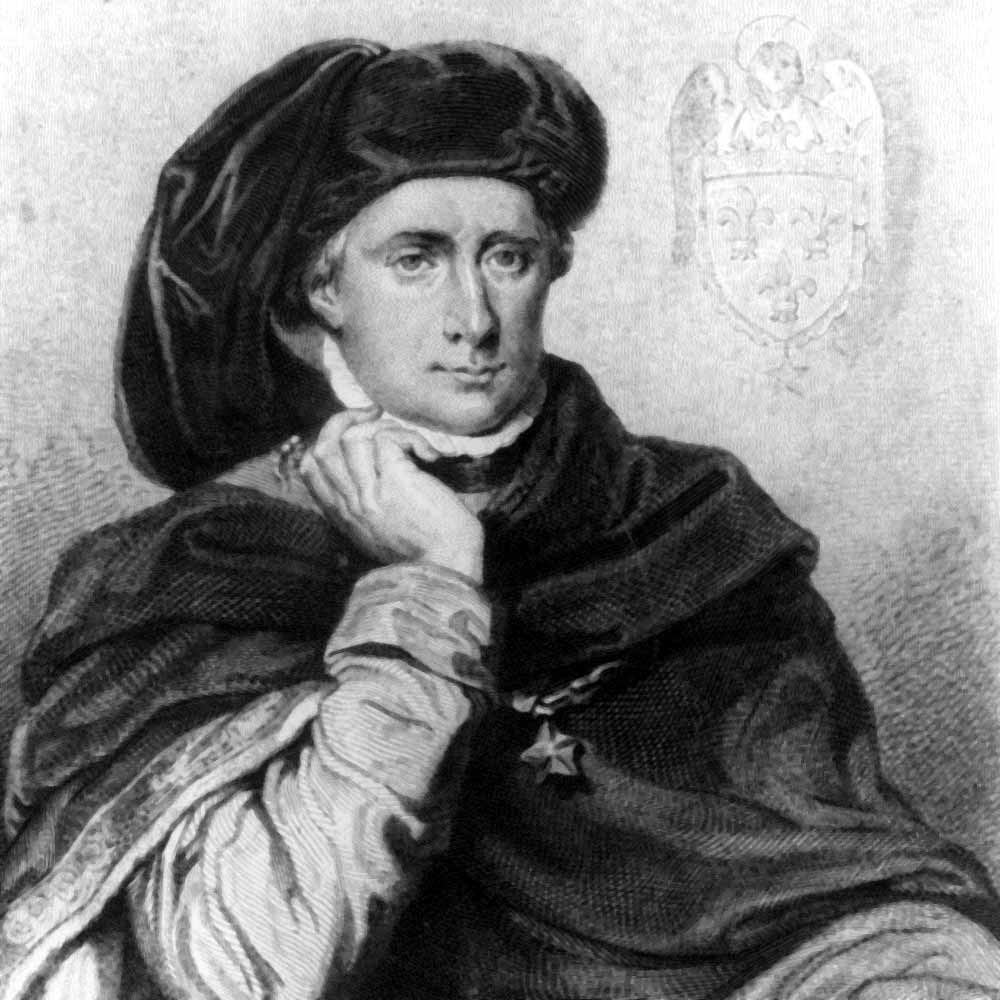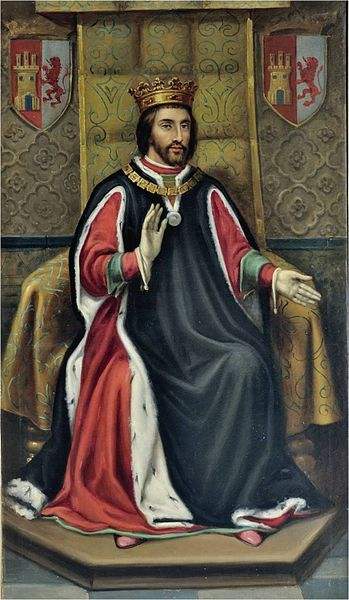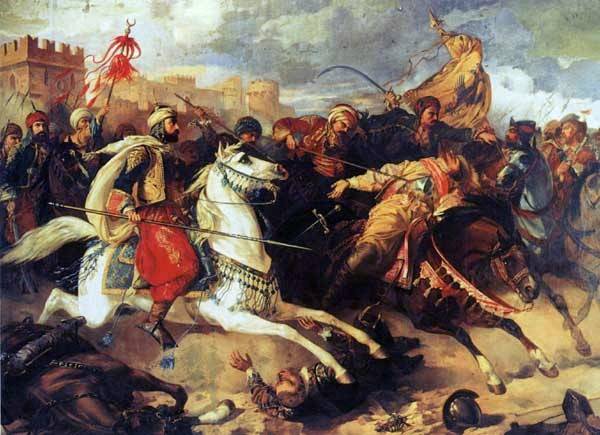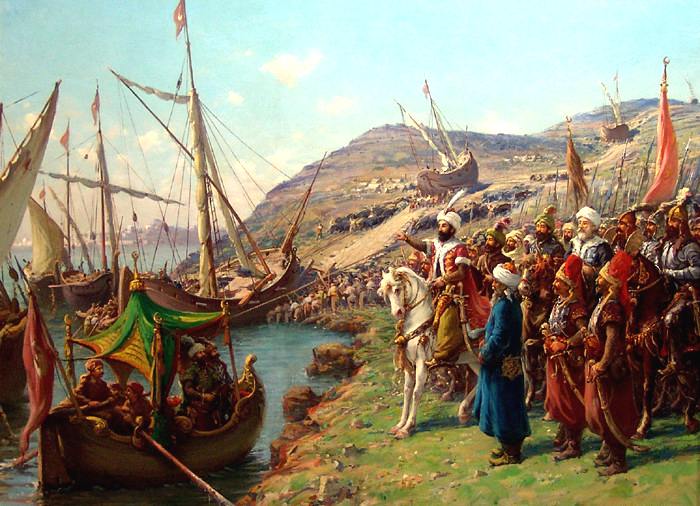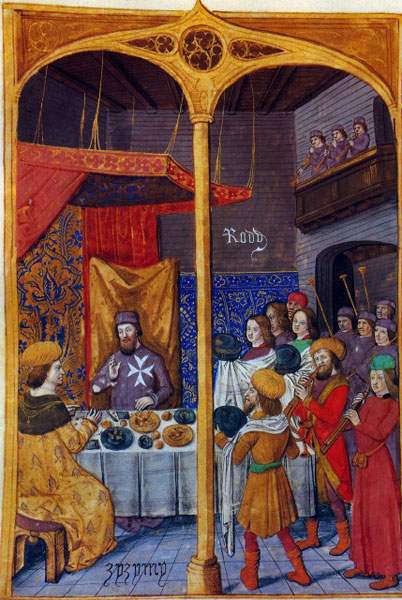II. Foundation of Christian states in the East;
III. First destruction of the Christian states (1144-87);
IV. Attempts to restore the Christian states and the crusade against Saint-Jean d’Acre (1192-98);
V. The crusade against Constantinople (1204);
VI. The thirteenth-century crusades (1217-52);
VII. Final loss of the Christian colonies of the East (1254-91);
VIII. The fourteenth-century crusade and the Ottoman invasion;
IX. THE CRUSADE IN THE FIFTEENTH CENTURY
An unlooked-for event, the invasion by Timur and the Mongols, saved Constantinople for the time being. They annihilated Bajazet’s army at Ancyra, 20 July, 1402, and, dividing the Ottoman Empire among several princes, reduced it to a state of vassalage. The Western rulers, Henry III, King of Castile, and Charles VI, King of France, sent ambassadors to Timur (see the account by Ruy Gonçales de Clavijo, Madrid, 1779), but the circumstances were not favourable, as they had been in the thirteenth century. The national revolt of the Chinese that overthrew the Mongol dynasty in 1368 had resulted in the destruction of the Christian missions in Farther Asia; in Central Asia the Mongols had been converted to Mohammedanism, and Timur showed his hostility to the Christians by taking Smyrna from the Hospitallers. Marshal Boucicault took advantage of the dejection into which the Mongol invasion had thrown the Mohammedan powers to sack the ports of Syria, Tripoli, Beirut, and Sidon in 1403, but he was unable to retain his conquests; while Timur, on the other hand, thought only of obtaining possession of China and returned to Samarkand, where he died in 1405.

Bayezid I, held captive by Emir Timur, in the Battle of Ankara, on July 20, 1402 and the Ottoman army was defeated.
The civil wars that broke out among the Ottoman princes gave the Byzantine emperors a few years’ respite, but Murad II, having re-established the Turkish power, besieged Constantinople from June to September in 1422, and John VIII, Palæologus, was compelled to pay him tribute. In 1430 Murad took Thessalonica from the Venetians, forced the wall of the Hexamilion, which had been erected by Manuel to protect the Peloponnesus, and subdued Servia. The idea of the crusade was always popular in the West, and, on his death-bed, Henry V of England regretted that he had not taken Jerusalem. In her letters to Bedford, the regent, and to the Duke of Burgundy, Joan of Arc alluded to the union of Christendom against the Saracens, and the popular belief expressed in the poetry of Christine de Pisan was that, after having delivered France, the Maid of Orleans would lead Charles VII to the Holy Land. But this was only a dream, and the civil wars in France, the crusade against the Hussites, and the Council of Constance, prevented any action from being taken against the Turks.
However, in 1421 Philip the Good, Duke of Burgundy, sent Gilbert de Lannoy, and in 1432, Bertrand de la Brocquière, to the East as secret emissaries to gather information that might be of value for a future crusade. At the same time negotiations for the religious union which would facilitate the crusade were resumed between the Byzantine emperors and the popes. Emperor John VIII came in person to attend the council convoked by Pope Eugene IV at Ferrara, in 1438. Thanks to the good will of Bessarion and of Isidore of Kiev, the two Greek prelates whom the pope had elevated to the cardinalate, the council, which was transferred to Florence, established harmony on all points, and on 6 July, 1439, the reconciliation was solemnly proclaimed. The reunion was received in bad part by the Greeks and did not induce the Western princes to take the cross. Adventurers of all nationalities enrolled themselves under the command of Cardinal Giuliano Cesarini and went to Hungary to join the armies of János Hunyady, Waywode of Transylvania, who had just repulsed the Turks at Hermanstadt, of Wladislaus Jagello, King of Poland, and of George Brankovitch, Prince of Servia. Having defeated the Turks at Nish, 3 November, 1443, the allies were enabled to conquer Servia, owing to the defection of the Albanians under George Castriota (Scanderbeg), their national commander.
Murad signed a ten years’ truce and abdicated the throne, 15 July, 1444, but Giuliano Cesarini, the papal legate, did not favour peace and wished to push forward to Constantinople. At his instigation the crusaders broke the truce and invaded Bulgaria, whereupon Murad again took command, crossed the Bosporus on Genoese galleys, and destroyed the Christian army at Varna, 10 November, 1444. This defeat left Constantinople defenceless. In 1446 Murad succeeded in conquering Morea, and when, two years later, János Hunyady tried to go to the assistance of Constantinople he was beaten at Kosovo. Scanderbeg alone managed to maintain his independence in Epirus and, in 1449, repelled a Turkish invasion. Mohammed II, who succeeded Murad in 1451, was preparing to besiege Constantinople when, 12 December, 1452, Emperor Constantine XII decided to proclaim the union of the Churches in the presence of the papal legates.
The expected crusade, however, did not take place; and when, in March, 1453, the armed forces of Mohammed II, numbering 160,000, completely surrounded Constantinople, the Greeks had only 5000 soldiers and 2000 Western knights, commanded by Giustiniani of Genoa. Notwithstanding this serious disadvantage, the city held out against the enemy for two months, but on the night of 28 May, 1453, Mohammed II ordered a general assault, and after a desperate conflict, in which Emperor Constantine XII perished, the Turks entered the city from all sides and perpetrated a frightful slaughter. Mohammed II rode over heaps of corpses to the church of St. Sophia, entered it on horseback, and turned it into a mosque.
The capture of “New Rome” was the most appalling calamity sustained by Christendom since the taking of Saint-Jean d’Acre. However, the agitation which the news of this event caused in Europe was more apparent than genuine. Philip the Good, Duke of Burgundy, gave an allegorical entertainment at Lille in which solicited the help of knights who pronounced the most extravagant vows before God and a pheasant (sur le faisan). Æneas Sylvius, Bishop of Siena, and St. John Capistran, the Franciscan, preached the crusade in Germany and Hungary; the Diets of Ratisbon and Frankfort promised assistance, and a league was formed between Venice, Florence, and the Duke of Milan, but nothing came of it. Pope Callistus III succeeded in collecting a fleet of sixteen galleys, which, under the command of the Patriarch of Aquileia, guarded the Archipelago. However, the defeat of the Turks before Belgrade in 1457, due to the bravery of János Hunyady, and the bloody conquest of the Peloponnesus in 1460 seemed finally to revive Christendom from its torpor. Æneas Sylvius, now pope under the name of Pius II, multiplied his exhortations, declaring that he himself would conduct the crusade, and towards the close of 1463 bands of crusaders began to assemble at Ancona. The Doge of Venice had yielded to the pope’s entreaties, whereas the Duke of Burgundy was satisfied with sending 2,000 men. But when, in June, 1464, the pope went to Ancona to assume command of the expedition, he fell sick and died, whereupon most of the crusaders, being unarmed, destitute of ammunition, and threatened with starvation, returned to their own countries. The Venetians were the only ones who invaded the Peloponnesus and sacked Athens, but they looked upon the crusade merely as a means of advancing their commercial interests.
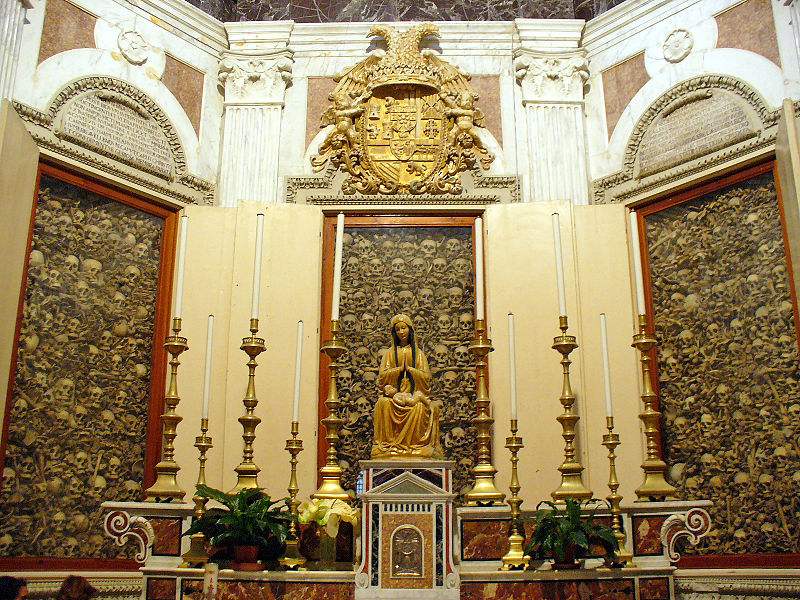
On July 28, 1480, an Ottoman fleet arrived at Otranto. The garrison and citizens of Otranto retreated to the Castle of Otranto. On August 11, after a 15-day siege, Gedik Ahmed ordered the final assault. When the walls were breached the Ottomans began fighting their way through the town to the cathedral and citadel. Upon reaching the cathedral, “they found Archbishop Stefano Agricolo, fully vested and crucifix in hand” awaiting them with Count Francesco Largo, the garrison commander and Bishop Stefano Pendinelli. The Archbishop was beheaded before the altar, Count Largo was sawed in half, Bishop Pendinelli was skewered and hacked to pieces by scimitars and their accompanying priests were all murdered.” After desecrating the Cathedral, they gathered the women and older children to be sold into Albanian slavery. Boys over fifteen year’s old, small children, and infants, were slain. A total of 12,000 were killed and 5,000 enslaved, including victims from the territories of the Salentine peninsula around the city.
Following the city’s capture, the Ottomans rounded up all the remaining male citizens. Up to 800 men were told to convert to Islam or be slain. A tailor named Antonio Primaldi is said to have proclaimed “Now it is time for us to fight to save our souls for the Lord. And since he died on the cross for us, it is fitting that we should die for him.” To which the captives with him gave a loud cheer. After refusing to convert, they all were led to the Hill of Minerva on August 14 (later renamed the Hill of Martyrs) were they were executed one-by-one. Primaldi was said to have been the first to be beheaded. The Martyrs of Otranto were collectively canonized as Saints on May 12, 2013. Their remains are displayed in the three glass reliquaries in the Otranto Cathedral and in the church of Santa Caterina a Formiello in Naples.
Under Sixtus IV they had the presumption to utilize the papal fleet for the seizure of merchandise stored at Smyrna and Adalia; they likewise purchased the claims of Catherine Cornaro to the Kingdom of Cyprus. Finally, in 1480, Mohammed II directed a triple attack against Europe. In Hungary Matthias Corvinus withstood the Turkish invasion, and the Knights of Rhodes, conducted by Pierre d’Aubusson, defended themselves victoriously, but the Turks succeeded in gaining possession of Otranto and threatened Italy with conquest. At an assembly held at Rome and presided over by Sixtus IV, ambassadors from the Christian princes again promised help; but the condition of Christendom would have been critical indeed had not the death of Mohammed II occasioned the evacuation of Otranto, while the power of the Turks was impaired for several years by civil wars among Mohammed’s sons. At the time of Charles VIII’s expedition into Italy (1492) there was again talk of a crusade; according to the plans of the King of France, the conquest of Naples was to be followed by that of Constantinople and the East. For this reason Pope Alexander VI delivered to him Prince Djem, son of Mahommed II and pretender to the throne, who had taken refuge with the Hospitallers.
When Alexander VI joined Venice and Maximilian in a league against Charles VIII, the official object of the alliance was the crusade, but it had become impossible to take such projects as seriously meant. The leagues for the crusade were no longer anything but political combinations, and the preaching of the Holy War seemed to the people nothing but a means of raising money. Before his death, Emperor Maximilian took the cross at Metz with due solemnity, but these demonstrations could lead to no satisfactory results. The new conditions that now controlled Christendom rendered a crusade impossible.
LOUIS BRÉHIER (Catholic Encyclopedia)
